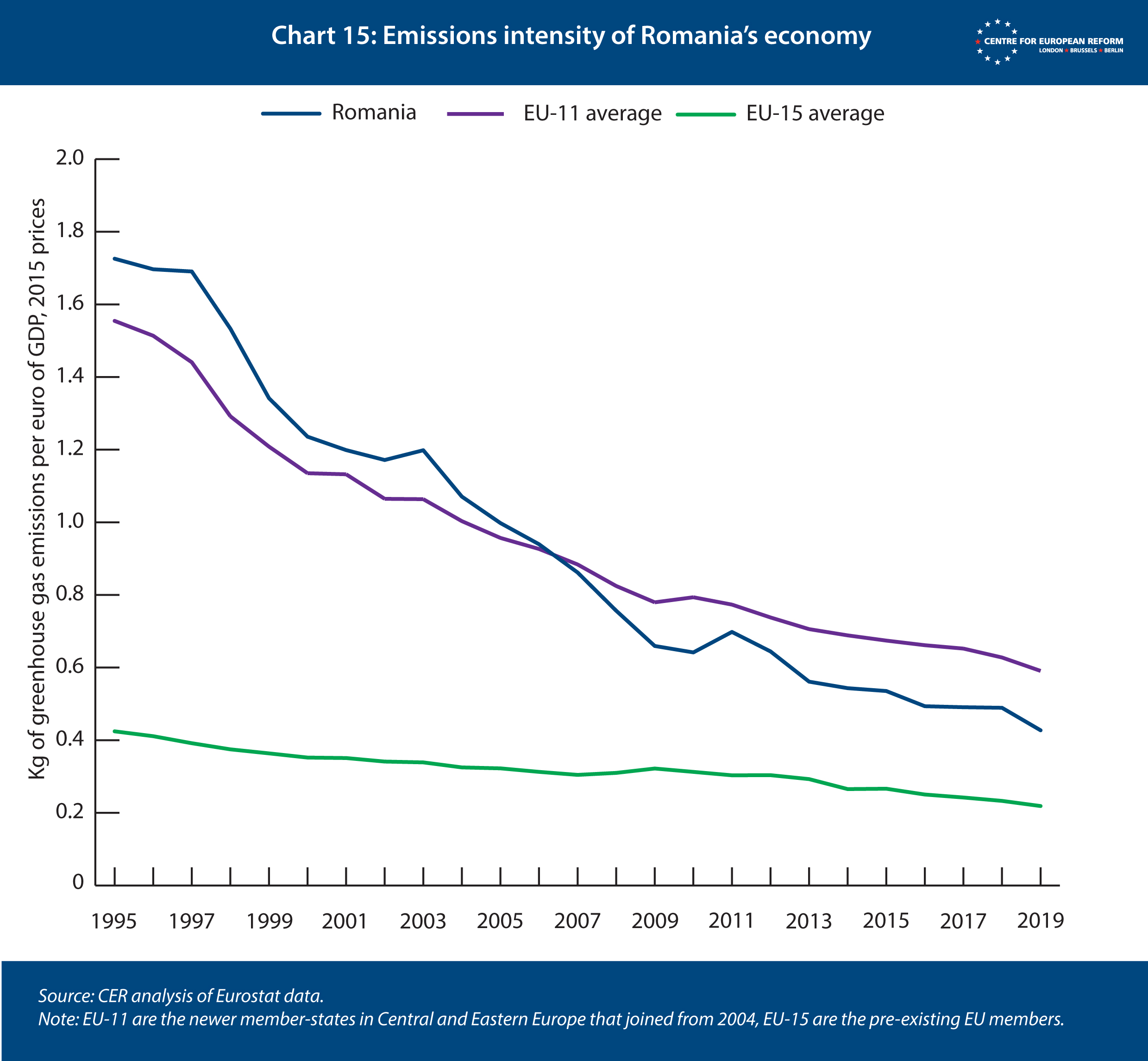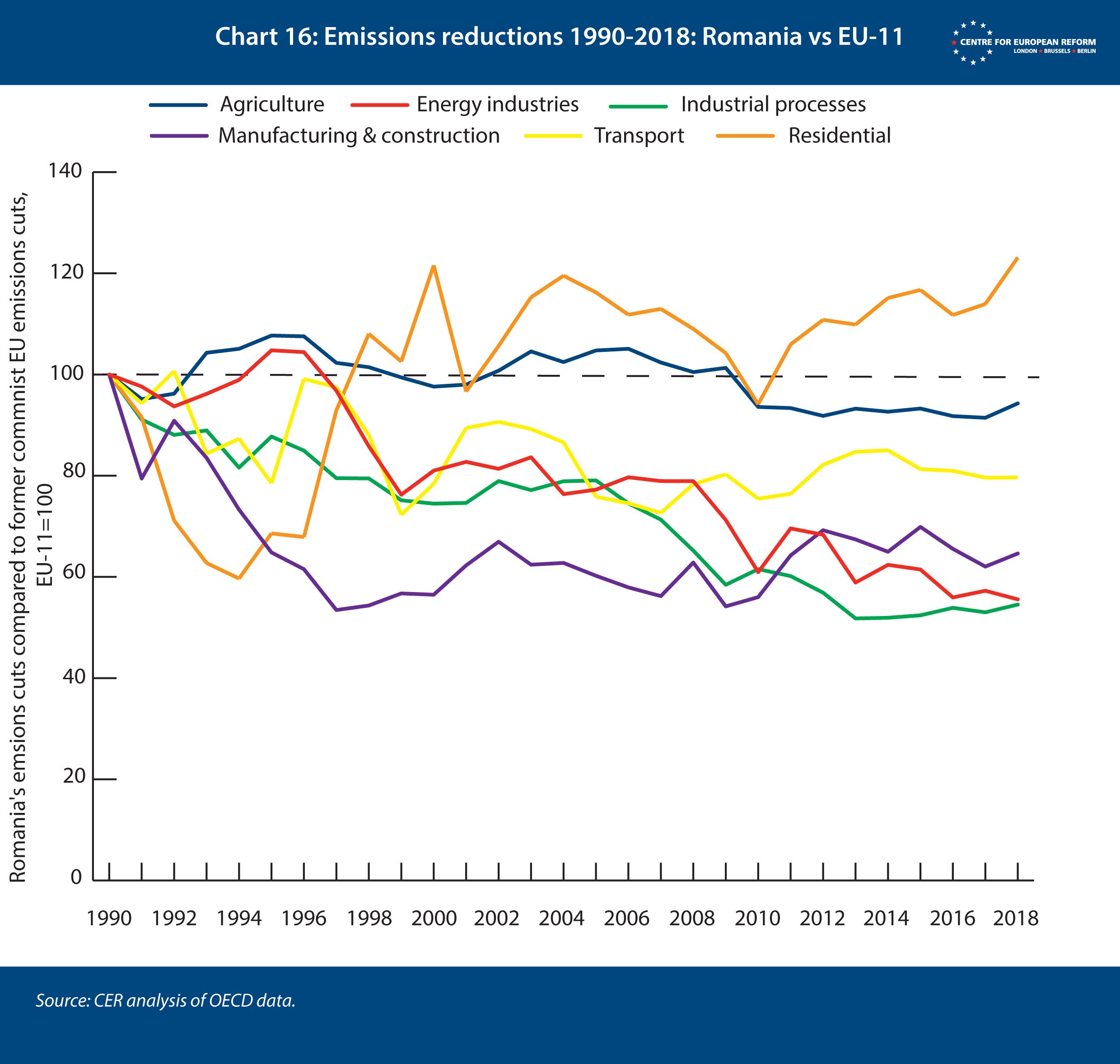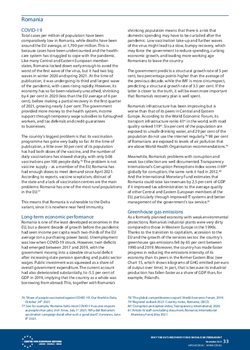
Why the EU's recovery fund should be permanent: Country report - Romania
The impact of the pandemic on Romania
Total cases per million of population have been comparatively low in Romania, while deaths have been around the EU average, at 1,700 per million. This is because cases have been undercounted and the health-care system has struggled to cope with the pandemic. Like many Central and Eastern European member-states, Romania locked down early enough to avoid the worst of the first wave of the virus, but it had two big waves in winter 2020 and spring 2021. At the time of publication, it was undergoing its third and largest wave of the pandemic, with cases rising rapidly. However, its economy has so far been relatively unscathed, shrinking by 4 per cent in 2020 (less than the EU average of 6 per cent), before making a partial recovery in the first quarter of 2021, growing nearly 3 per cent. The government provided more money to the health system, income support through temporary wage subsidies to furloughed workers, and tax deferrals and credit guarantees to businesses.
The country’s biggest problem is that its vaccination programme has gone very badly so far. At the time of publication, a little over 30 per cent of its population has had both doses of the vaccine, and the number of daily vaccinations has slowed sharply, with only 0.08 vaccinations per 100 people daily.1 The problem is not vaccine supply – as a member of the EU, Romania has had enough doses to meet demand since April 2021. According to reports, vaccine scepticism, distrust of the state and a lack of vaccination centres are the main problems: Romania has one of the most rural populations in the EU.2
This means that Romania is vulnerable to the Delta variant, since it is nowhere near herd immunity.
Long-term economic performance
Romania is one of the least developed economies in the EU, but a decent decade of growth before the pandemic had seen income per capita reach two-thirds of the EU average (on a purchasing power basis). Unemployment was low when COVID-19 struck. However, twin deficits had emerged between 2017 and 2019, with the government moving into a sizeable structural deficit after increasing state pension spending and public sector wages. Public investment was squeezed as a share of overall government expenditure. The current account had also deteriorated substantially, to -5.5 per cent of GDP in 2019, implying that the country as a whole was borrowing from abroad. This, together with Romania’s shrinking population means that there is a risk that domestic spending may have to be curtailed after the pandemic. Low vaccination take-up and further waves of the virus might lead to a slow, bumpy recovery, which may force the government to reduce spending, curbing economic growth, and leading more working age Romanians to leave the country.
The government predicts a structural growth rate of 5 per cent, two percentage points higher than the average of the previous decade, while the IMF is more circumspect, predicting a structural growth rate of 3.5 per cent. If the latter is closer to the truth, it will be even more important that Romania’s recovery plan is well spent.
Romania’s infrastructure has been improving but is worse than that of its peers in Central and Eastern Europe. According to the World Economic Forum, its transport infrastructure ranks 61st in the world, with road quality ranked 119th. Six per cent of the population are exposed to unsafe drinking water, and 29 per cent of the population do not use the internet regularly.3 98 per cent of Romanians are exposed to levels of air pollution that are above World Health Organisation recommendations.4
Meanwhile, Romania’s problems with corruption and weak tax collection are well documented. Transparency International’s Corruption Perceptions Index scores it 69th globally for corruption, the same rank it had in 2012.5 And the International Monetary Fund estimates that Romania could raise tax revenues by 2.5 per cent of GDP if it improved tax administration to the average quality of other Central and Eastern European members of the EU, particularly through improved IT systems and better management of the government’s tax service.6
Greenhouse gas emissions
As a formerly planned economy with weak environmental protections, Romania’s industrial plants were very dirty compared to those in Western Europe in the 1990s. Thanks to the transition to capitalism, accession to the EU and the growth of the services sector, the country’s greenhouse gas emissions fell by 65 per cent between 1990 and 2019. Moreover, the country has made faster progress in reducing the emissions intensity of its economy than its peers in the former Eastern Bloc (see Chart 15, which shows kilograms of GHG emitted per euro of output over time). In part, that is because its industrial production has fallen faster as a share of GDP than, for example, Poland’s.


But it is not only in the heavy industry and manufacturing sectors that Romania has out-performed its peers. Its emissions cuts have also been more rapid than the average in former communist EU member-states in all sectors, including transport and agriculture, except for housing. A score below 100 in Chart 16 below corresponds to more cuts than the average, compared to the 1990 baseline.
However, as Chart 15 shows, Romania still has a way to go before it catches up with Western Europe, as measured by emissions intensity. The EU’s ‘effort sharing’ principles mean that, outside those sectors governed by the Emissions Trading Scheme (such as electricity generation, in which decarbonisation is in part determined by EU-level action), Romania must reduce emissions by 2 per cent in 2030, relative to their level in 2005.7 Targets in more developed countries are much tougher, because they have more financial and technological resources to spend on climate action. That means that Romania has some wiggle room to expand its road network, helping to connect its sizeable rural population to more employment opportunities, for example.
Romania’s recovery plan
Romania has requested €14 billion in grants and €15 billion in loans from the RRF. The grants amount to more than 6 per cent of annual GDP, although they will be spent over several years, from 2021 to 2026.
Romania’s recovery plan proposes reforms and investments that deal with most of the recommendations that the European Commission and the IMF have been making for several years. The main areas for spending and reform are:
- €7.6 billion on roadbuilding, road safety and electric vehicle charging; railway and metro improvements; reform of vehicle taxation to raise the cost of pollution
- €2.2 billion on energy efficiency in government and residential buildings
- €1.9 billion on improving public sector IT; reforms to ensure more high-speed internet access
- €1.9 billion on improving water and sewerage
- €1.6 billion on electrifying transport; reform of the electricity market to eliminate coal
- €1.4 billion on reforestation and biodiversity
- €1.2 billion on waste management
- €0.5 billion on digitisation of the anti-fraud and customs offices, alongside reforms to raise tax collection
The European Commission signed off on the second version of Romania’s plan in September 2021. The first had been sent back because there was not enough focus on green investment. The second plan had to be redrafted, because it had missed out detailed information on costs and spending. Newsweek Romania reported that the government had provided inconsistent sums in the chapter on digital investment, and it had plans to use EU money to cover recurring costs, such as civil servants’ salaries, when the RRF’s rules dictate that the money must be used for one-off investments.8
So far at least, the Romanian case suggests that the recovery fund process is working as it should: European Commission officials have been scrutinising plans effectively and refusing to sign them off if they do not match the RRF criteria; and the reform and investment priorities seem reasonable. Ensuring investments and reforms are effective will require continued scrutiny, especially in countries with weaker institutions for holding governments to account.
2: See for example, ‘Romania halts most Covid-19 vaccine imports as people shun jabs’, Irish Times, July 1st 2021; ‘Why did Romania’s vaccination campaign derail after such a good start?’, Euronews, June 8th 2021.
3: ‘The global competitiveness report’, World Economic Forum, 2019.
4: ‘Regional outlook 2021: Country notes, Romania’, OECD.
5: ‘Corruption perception index’, Transparency International, 2020.
6: ‘Article IV staff concluding document, Romania’, International Monetary Fund, May 2021.
7: ‘Summary of the Commission assessment of the draft National Energy and Climate Plan 2021-2030, Romania’, European Commission, 2019.
8: ‘Weitere milliarden aus Brüssel – diese vier Länder bekommen das “Go”’, Die Welt, July 26th 2021; ‘Document exclusiv: Comisia Europeană desființează capitolul PNRR de Digitalizare. Costuri suspecte’, Newsweek Romania, July 30th 2021.
Elisabetta Cornago is a research fellow and John Springford is deputy director of the Centre for European Reform
November 2021
This paper is published in partnership with the Open Society European Policy Institute.
View press release
Download full publication

